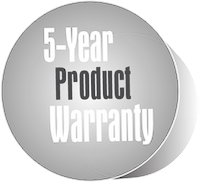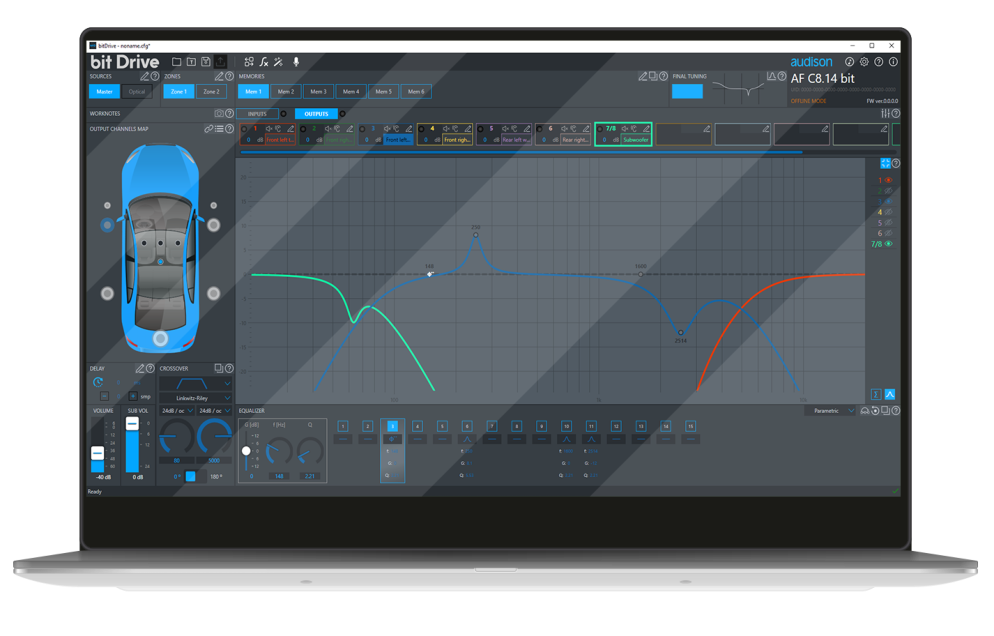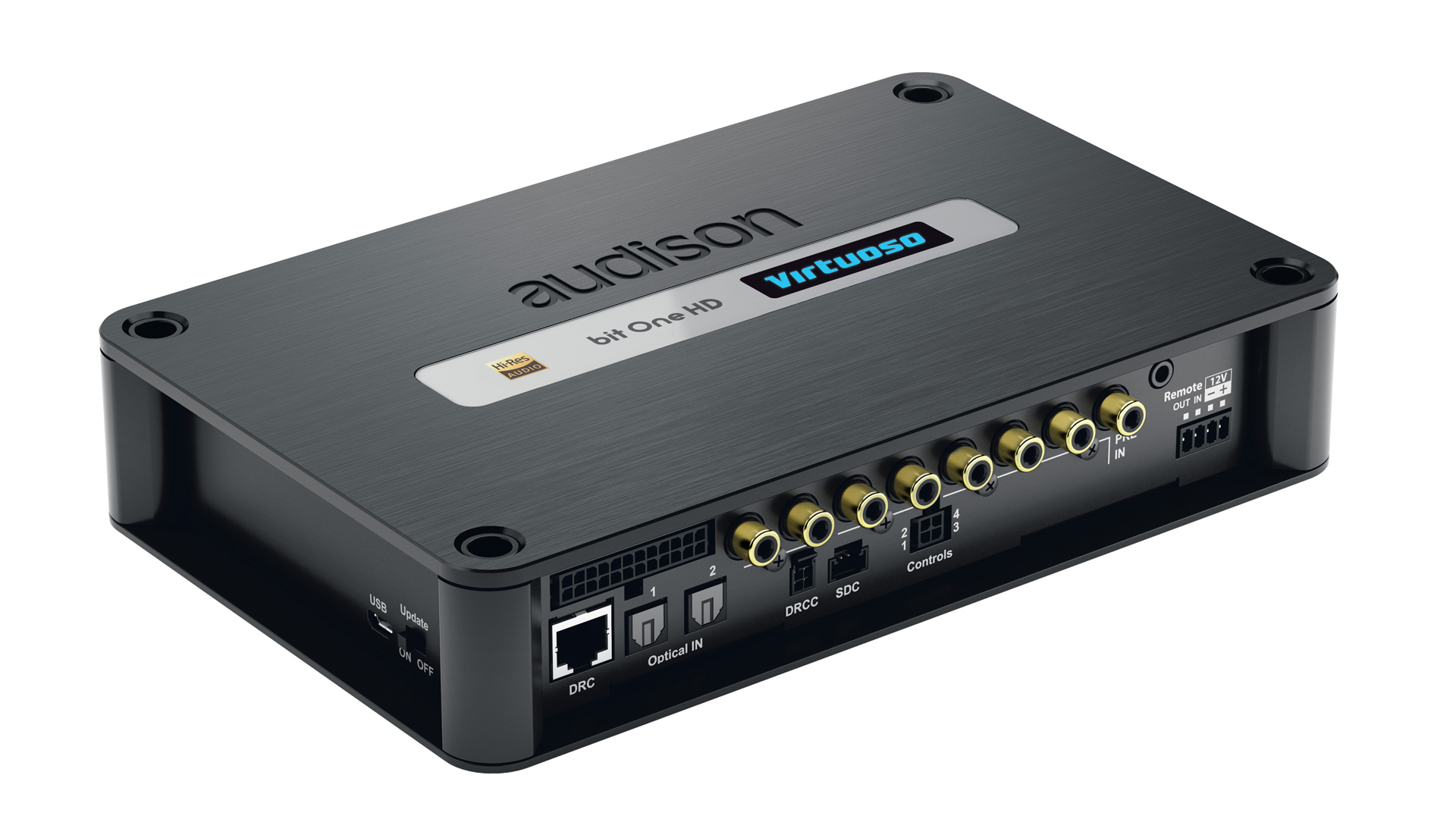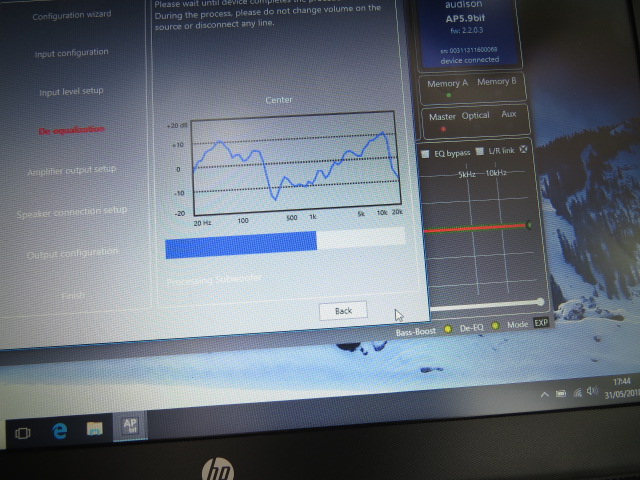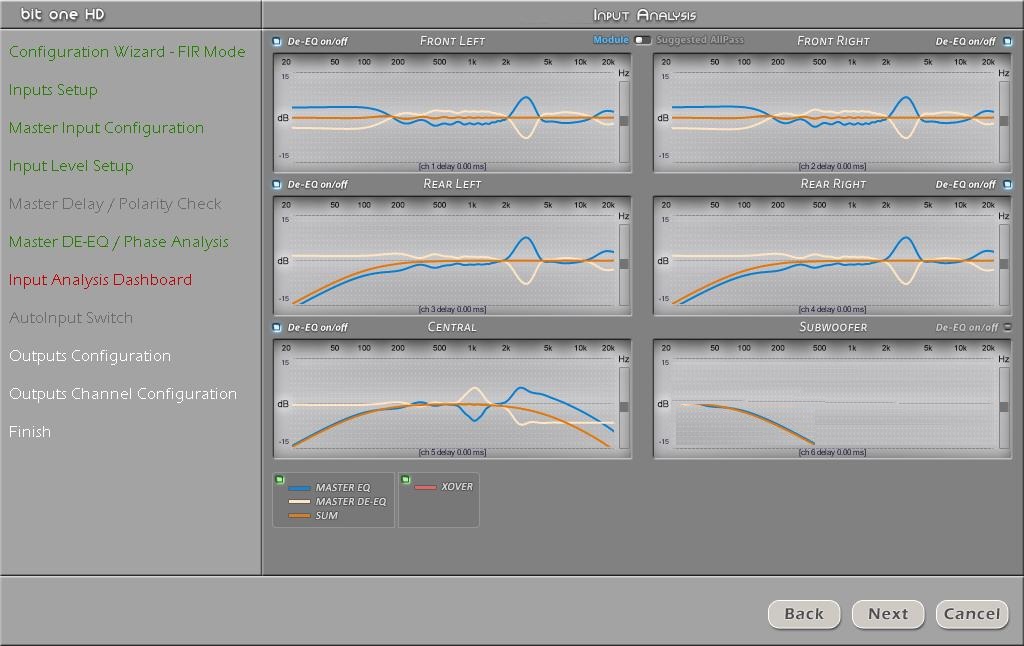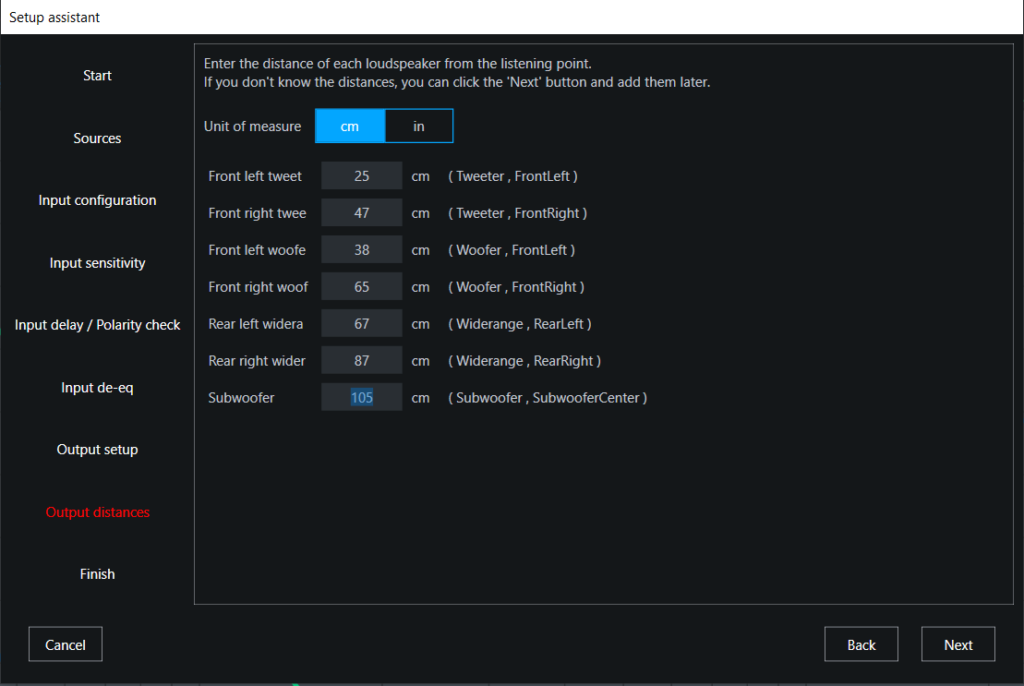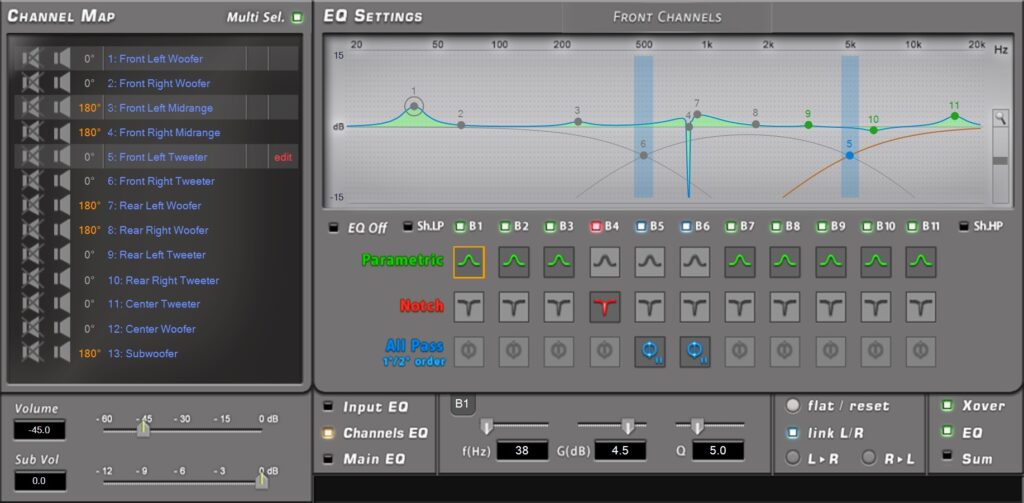Setting up a bit
“Setting up a bit” could be a misleading title for this blog, as we do not intend to tell you how to do this. Instead, we will look at what is involved and perhaps suggest that this is best left to professionals.
bit Drive, the overarching name for Audison bit-equipped devices, is a particularly clever software package which gives access to myriad functions and features to make a car’s audio system sound spectacular. DSP (Digital Signal Processing) is commonplace in vehicles these days. Many have some form of DSP technology on board. These carry heavily modified sound curves to make cheap speakers used in the manufacture of cars sound almost palatable and protect them from damage when the audio system is turned up.
Whether your upgraded system contains a separate processor, such as that pictured above, or one built into your upgrade amplifier, the basic principles remain the same.
To achieve Hi-fi in a car, we need to accomplish the following tasks: Remove phase discrepancies, create a stereo image, Set the levels of each speaker, and adjust Equalisation for taste. Because of the distortions to phase, eq, and level imposed by the car manufacturer, we start by eliminating inherent issues.
As an illustration of how ruthless car manufacturers are when it comes to sound, this is the sound curve from a Dacia Duster factory head unit. This plot was made by an Audison Prima AP 5.9bit amplifier with a bit DSP built-in. You can see the extreme efforts they have gone to in an attempt to make their rubbish speakers sound anywhere near musical.
The plot shows that they have removed all mid-range frequencies and boosted the high and low frequencies to ridiculous levels. Sadly, this ploy didn’t work, and it sounded shocking. Once a new Prima system had been installed, the first part of the setting up process was to make that curve as flat as possible. This is not because a flat frequency response is necessarily the best thing, but it is a great starting point. All Audison bit processors can flatten the curve with a mere press of the right buttons as the process is more or less automated. The trick is, knowing where these buttons are and having a suitable microphone array in the vehicle, so the processor can “hear” what it is doing.
On a multiple-channel factory system, a bit Drive device can make the same adjustment on each channel individually. As you can see, the screen offers options for many other adjustments, including Master Input Configuration.
The system can also remove any time delays the vehicle manufacturer puts and check and adjust the phase, as these two elements are widely used to make bad speakers work in poor speaker positions.
When good speakers with a wide dispersion characteristic are installed, we don’t need to try so hard, as the hardware does much of the work. However, although much better, good speakers alone won’t necessarily fully compensate for terrible mounting positions.
The screenshot above shows the page where speaker distances are input. This is the distance between each speaker and the listener’s ears. This helps the bit drive device add delays so that the sound from each speaker arrives at the ears simultaneously.
Selecting a crossover type is fundamental to achieving optimal performance from a multiple-speaker system. bit Drive devices offer many options, and some knowledge is required to make the most suitable selections. Once done, we can consider making fine EQ adjustments to suit specific requirements.
EQ is the same as tone control. bit Drive devices allow for highly detailed tweaks. The EQ is a multiple-pole parametric system (see image above). Each pole is a centre frequency that can be moved up or down the frequency range. Specific frequencies can be boosted. A parametric curve can be selected, simultaneously boosting a few or many frequencies on either side of the centre frequency. Still with me? – Despite having received sound engineer training (many years ago), even I find myself falling down “tweak holes” when presented with so many adjustable parameters.
To reduce the need for too much tweaking, a vehicle’s setting can be stored by your specialist and shared with other installers. There is a significant database building worldwide of setup files for specific vehicles. These give installers a handy and necessary quick start.
As you can see, Audison bit Drive is not a simple thing to operate which is why we always encourage car owners to get their local specialist to do it for them.
If you have the knowledge and skill required to make adjustments, adding a DRC remote to your DSP device allows you to access several programmable setups. Keeping the original dealer setting for reference is always a good idea, as getting lost in the technology is very easy.
We hope this insight explains the purpose and need for a DSP in an upgraded audio system. Whether you consider an amplifier with DSP built-in or in a separate box is something for you to discuss with your local specialist. Try a trained FOUR or FOUR MASTER specialist for the best advice.

